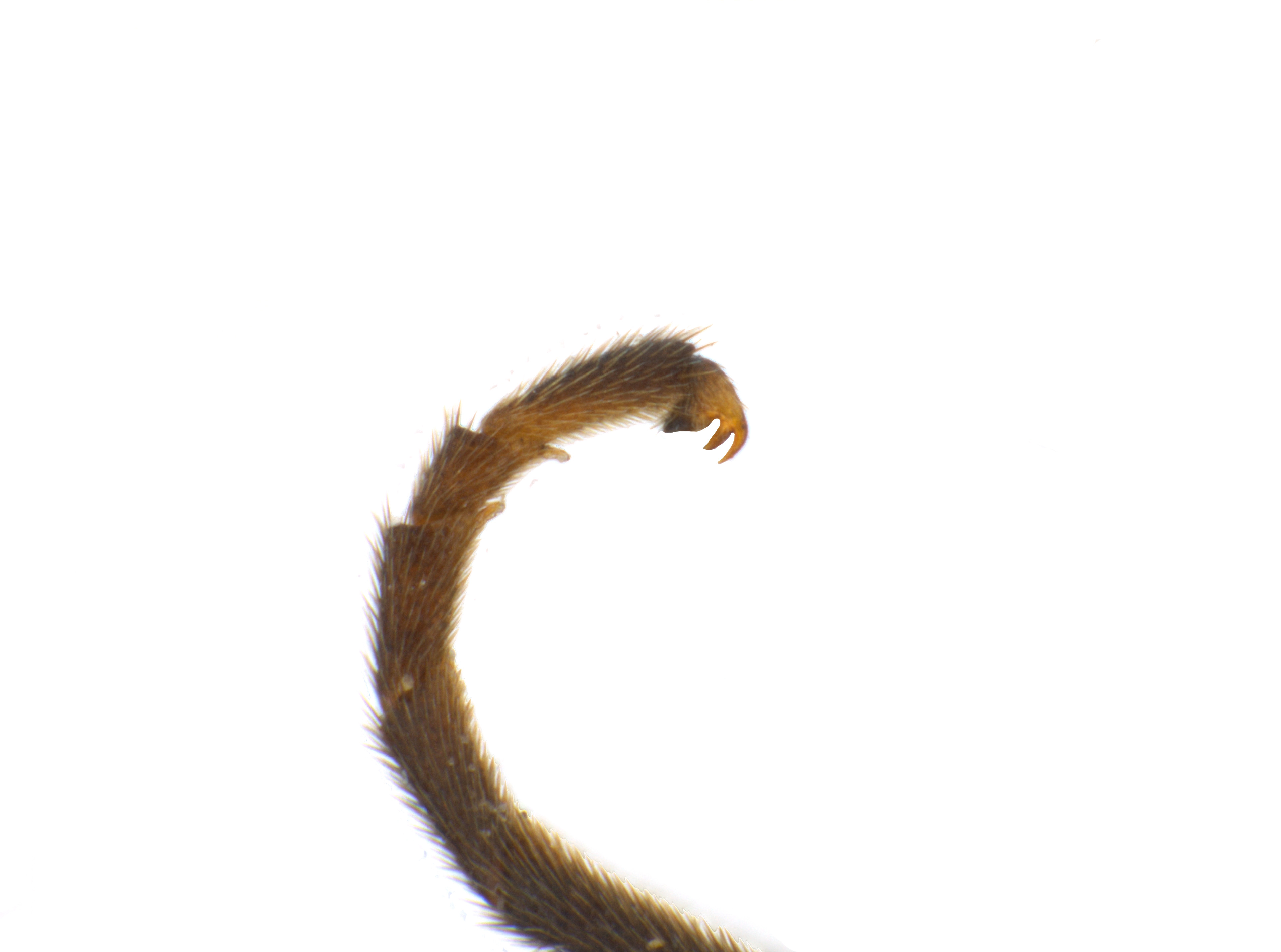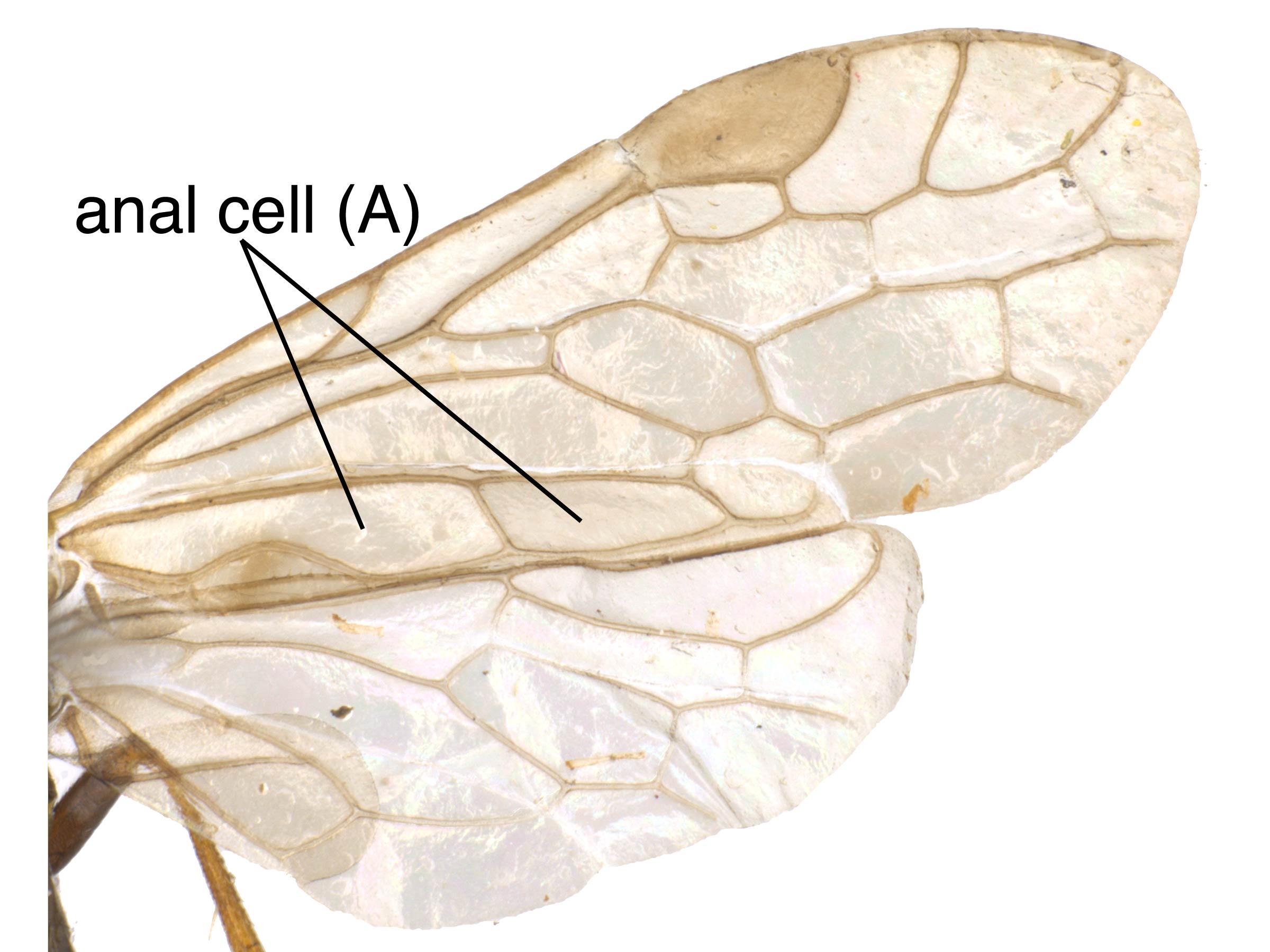Family: Tenthredinidae
Family common name: common sawflies
Subfamily: Blennocampinae
Tribe: Lycaotini
Genus: Blennogeneris MacGillivray, 1923
Subgenera: none
The Tenthredinidae are the most species-rich family and are found throughout the world, in all continents but Antarctica. They are known as the “common sawflies.” They can generally be recognized by a cylindrical body and long, segmented antennaeantenna:
the sensory organ emerging from the front of the head, usually between the compound eyes and above the clypeus; includes the flagellum, scape and pedicel
 . Otherwise, they come in a variety of colors, sizes, and forms (Goulet 1992Goulet 1992:
. Otherwise, they come in a variety of colors, sizes, and forms (Goulet 1992Goulet 1992:
Goulet H. 1992. The genera and subgenera of the sawflies of Canada and Alaska: Hymenoptera. Symphyta. The insects and arachnids of Canada. Part 20. Agriculture Canada Publication.).
Sawflies in the subfamily Blennocampinae have a diverse set of life histories and habits. Many species are restricted to subtropical and tropical regions, but the genus is still fairly species-rich in North America. Blennocampinae includes many sawflies that feed on ornamental and forestry crops. This subfamily can be recognized by wing venationvenation:
the network of veins on a wing
and bidentatebidentate:
having two teeth; often used in descrbing mandibles or tarsal claws
 mandibles (Smith 1969dSmith 1969d:
mandibles (Smith 1969dSmith 1969d:
Smith DR. 1969d. Nearctic Sawflies. I. Blennocampinae: Adults and larvae (Hymenoptera: Tenthredinidae). Technical Bulletin, U.S. Department of Agriculture 1397: 1-176.).
Blennogeneris is a genus of medium-sized, mostly black sawflies with reddish legs. Blennogeneris spisspes has an uncommon life history: it develops in bud galls of snowberry (Smith 1969dSmith 1969d:
Smith DR. 1969d. Nearctic Sawflies. I. Blennocampinae: Adults and larvae (Hymenoptera: Tenthredinidae). Technical Bulletin, U.S. Department of Agriculture 1397: 1-176.).
There are three described extantextant:
in existence; opposite of extinct
species worldwide, and all are restricted to North America (Taeger et al. 2010Taeger et al. 2010:
Taeger A, Blank SM, and Liston AD. 2010. World Catalog of Symphyta (Hymenoptera). Zootaxa 2580: 1-1064.).
Subfamily characters
 veins Cu1 and 1m-cu between 120°–150° (Goulet 1992Goulet 1992:
veins Cu1 and 1m-cu between 120°–150° (Goulet 1992Goulet 1992: veins M and 1m-cu parallel (Smith 1969dSmith 1969d:
veins M and 1m-cu parallel (Smith 1969dSmith 1969d:Genus characters
 veins 2A and 3A complete, forming an anal cellanal cell:
veins 2A and 3A complete, forming an anal cellanal cell: (Goulet 1992Goulet 1992:
(Goulet 1992Goulet 1992: anal cellanal cell:
anal cellanal cell: slightly constricted basally (Goulet 1992Goulet 1992:
slightly constricted basally (Goulet 1992Goulet 1992: anal cellanal cell:
anal cellanal cell: crossvein very short and perpendicular (Goulet 1992Goulet 1992:
crossvein very short and perpendicular (Goulet 1992Goulet 1992: hyaline (Goulet 1992Goulet 1992:
hyaline (Goulet 1992Goulet 1992:Blennogeneris can be confused with similar species in the subfamily Blennocampinae. It can be distinguished from most other genera by the complete fore wingfore wing:
the anterior wing of each pair of wings; usually the largest wing of the pair
 anal cellanal cell:
anal cellanal cell:
cell A of either the fore wing or hind wing
 and from similar genus Lycaota by the clear wings and reddish-brown colored legs (Goulet 1992Goulet 1992:
and from similar genus Lycaota by the clear wings and reddish-brown colored legs (Goulet 1992Goulet 1992:
Goulet H. 1992. The genera and subgenera of the sawflies of Canada and Alaska: Hymenoptera. Symphyta. The insects and arachnids of Canada. Part 20. Agriculture Canada Publication.).
none
In North America, B. spissipes feeds on Symphoricarpos (snowberry) (Smith 1993Smith 1993:
Smith DR. 1993. Systematics, life history, and distribution of sawflies. Pp. 3-32. In: Wagner MR and Raffa KF, eds. Sawfly Life History Adaptations to Woody Plants. University of Minnesota Academic Press. 581 pp.). Hosts for the other species are unknown (Smith 1969dSmith 1969d:
Smith DR. 1969d. Nearctic Sawflies. I. Blennocampinae: Adults and larvae (Hymenoptera: Tenthredinidae). Technical Bulletin, U.S. Department of Agriculture 1397: 1-176.).
Blennogeneris spissipes is a gall-inducing sawfly. Females oviposit eggs into terminal leaf buds when the buds first start forming in the spring (Smith 1969dSmith 1969d:
Smith DR. 1969d. Nearctic Sawflies. I. Blennocampinae: Adults and larvae (Hymenoptera: Tenthredinidae). Technical Bulletin, U.S. Department of Agriculture 1397: 1-176.). The galls induced by the larvaelarva:
the immature stage of holometabolous insects
 are oblong, globular, and somewhat fleshy. They vary in size from 10–35 mm in diameter and often appear in pairs on the bud. The larvaelarva:
are oblong, globular, and somewhat fleshy. They vary in size from 10–35 mm in diameter and often appear in pairs on the bud. The larvaelarva:
the immature stage of holometabolous insects
 feed inside the gall and make small holes in the walls to push out built-up frassfrass:
feed inside the gall and make small holes in the walls to push out built-up frassfrass:
solid larval excrement
(Larew and Capizzi 1983Larew and Capizzi 1983:
Larew H and Capizzi J. 1983. Common insect and mite galls of the Pacific Northwest. Oregon State University Press. 80 pp., Russo 2006Russo 2006:
Russo R. 2006. Field guide to plant galls of California and other western states. University of California Press.). At maturity, the larvaelarva:
the immature stage of holometabolous insects
 leave the gall and burrow into the soil to overwinter (Ross 1932bRoss 1932b:
leave the gall and burrow into the soil to overwinter (Ross 1932bRoss 1932b:
Ross HH. 1932. The subfamily Lycaotinae in North America (Hymenoptera, Tenthredinidae). The Canadian Entomologist 64 (2): 40-45., Smith 1969dSmith 1969d:
Smith DR. 1969d. Nearctic Sawflies. I. Blennocampinae: Adults and larvae (Hymenoptera: Tenthredinidae). Technical Bulletin, U.S. Department of Agriculture 1397: 1-176.).
World: This genus is known only from North America (Taeger et al. 2010Taeger et al. 2010:
Taeger A, Blank SM, and Liston AD. 2010. World Catalog of Symphyta (Hymenoptera). Zootaxa 2580: 1-1064.).
North America: Blennogeneris is a generally western genus that occurs in the Pacific Northwest and Rocky Mountain regions, as far south as California, and as far east as Minnesota and Manitoba (Smith 1969dSmith 1969d:
Smith DR. 1969d. Nearctic Sawflies. I. Blennocampinae: Adults and larvae (Hymenoptera: Tenthredinidae). Technical Bulletin, U.S. Department of Agriculture 1397: 1-176.).
Map data from: GBIF.org (29 October 2019) GBIF Occurrence Download Blennogeneris
Details about data used for maps can be found here.